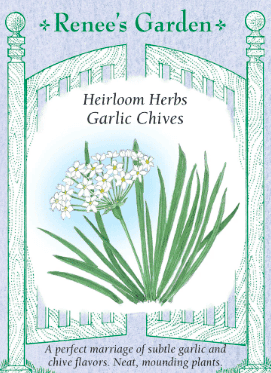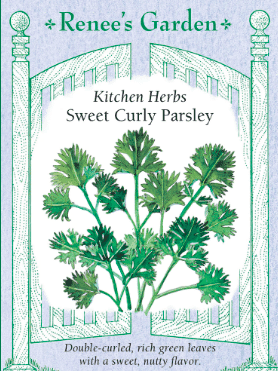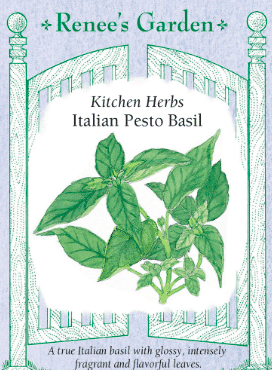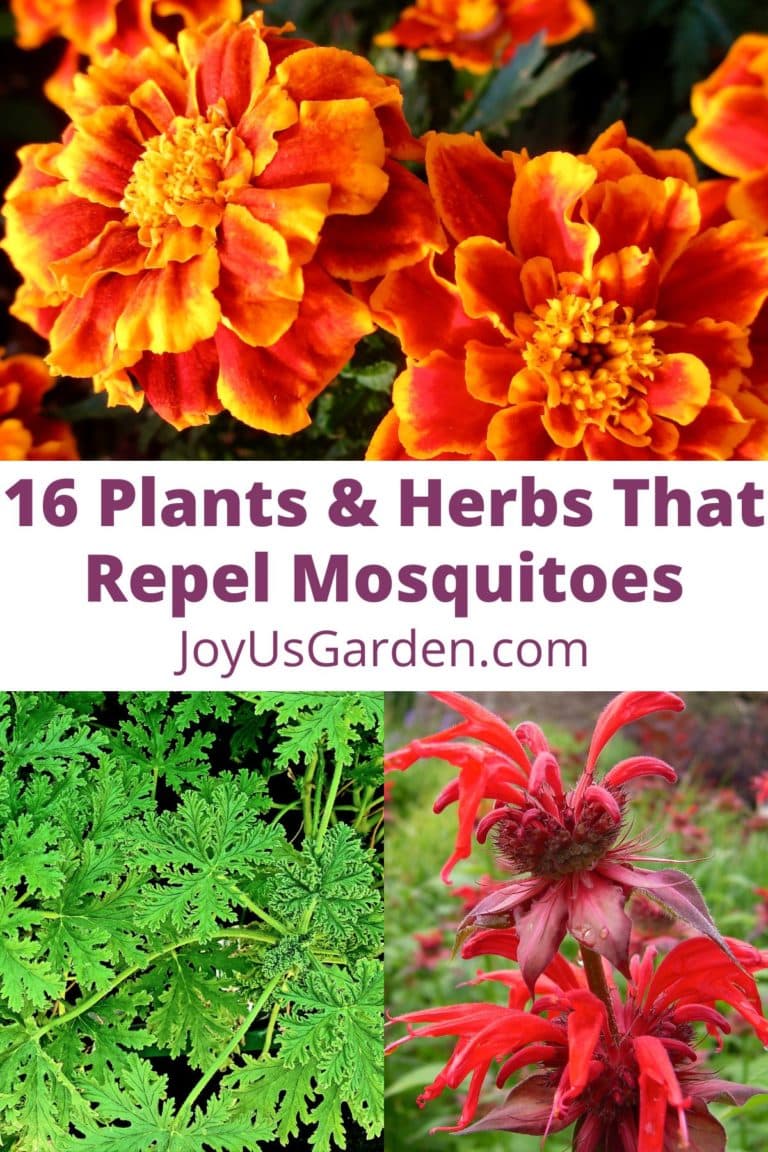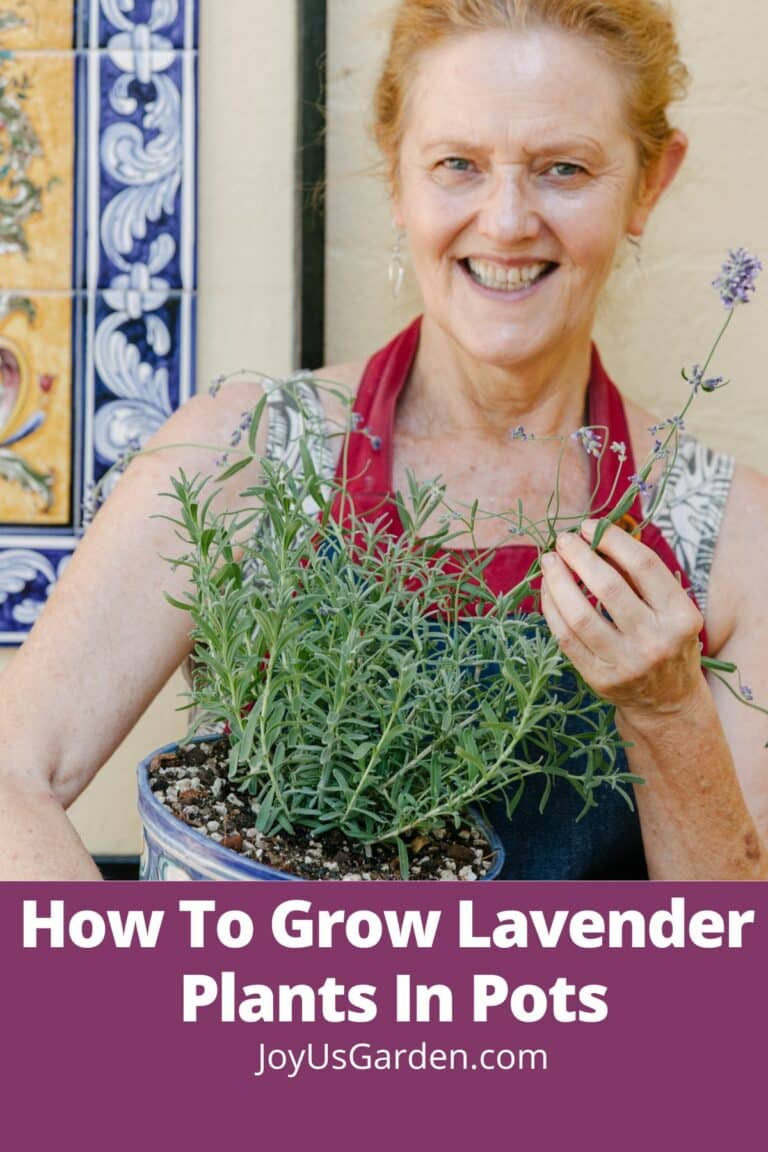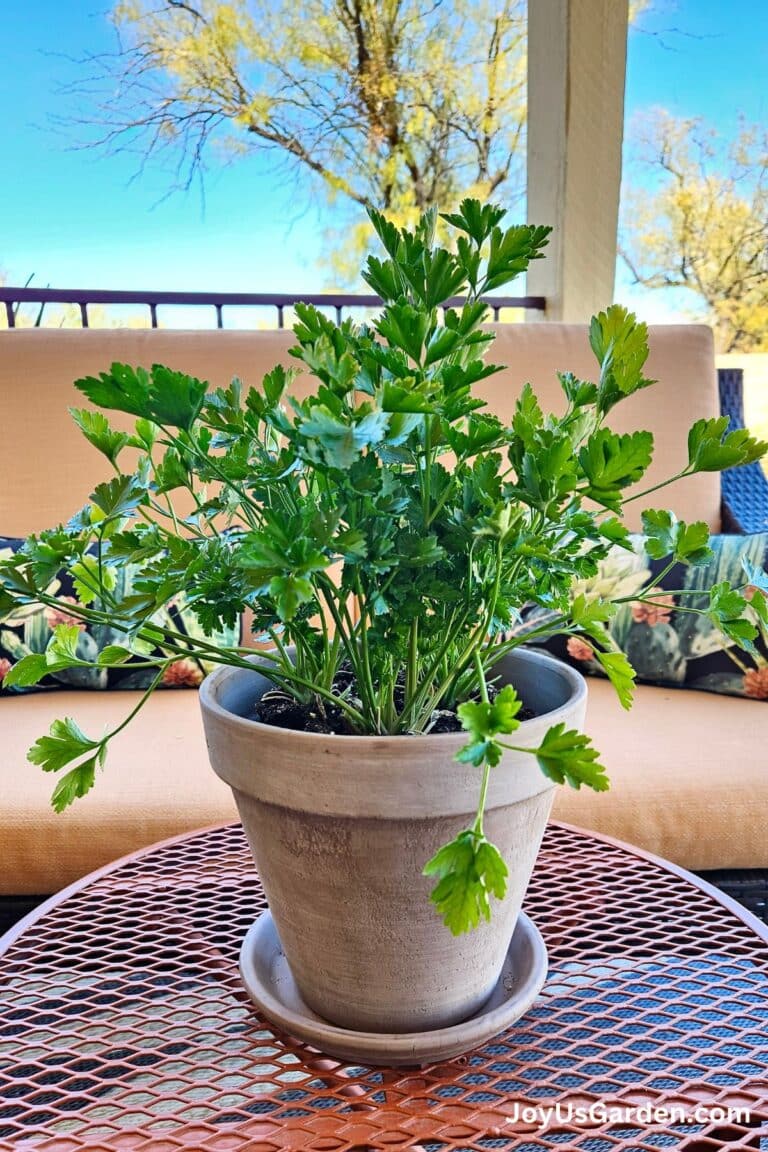10 Best Herbs To Grow Indoors: Growing Fresh Herbs Year Round
If you’ve ever thought about growing your own indoor herb garden, this guide can help. We’ll introduce you to some of the best herbs to grow indoors and give you tips on keeping culinary herbs healthy and thriving all year.
With just a sunny windowsill and a few pots of herbs, you can keep an impressive indoor herb garden all year round and always have fresh herbs on hand for your recipes! Both annual herbs and perennial herbs can grow beautifully indoors in small pots, and keeping your favorite herbs inside can dramatically extend your growing season.
How to Grow An Indoor Herb Garden
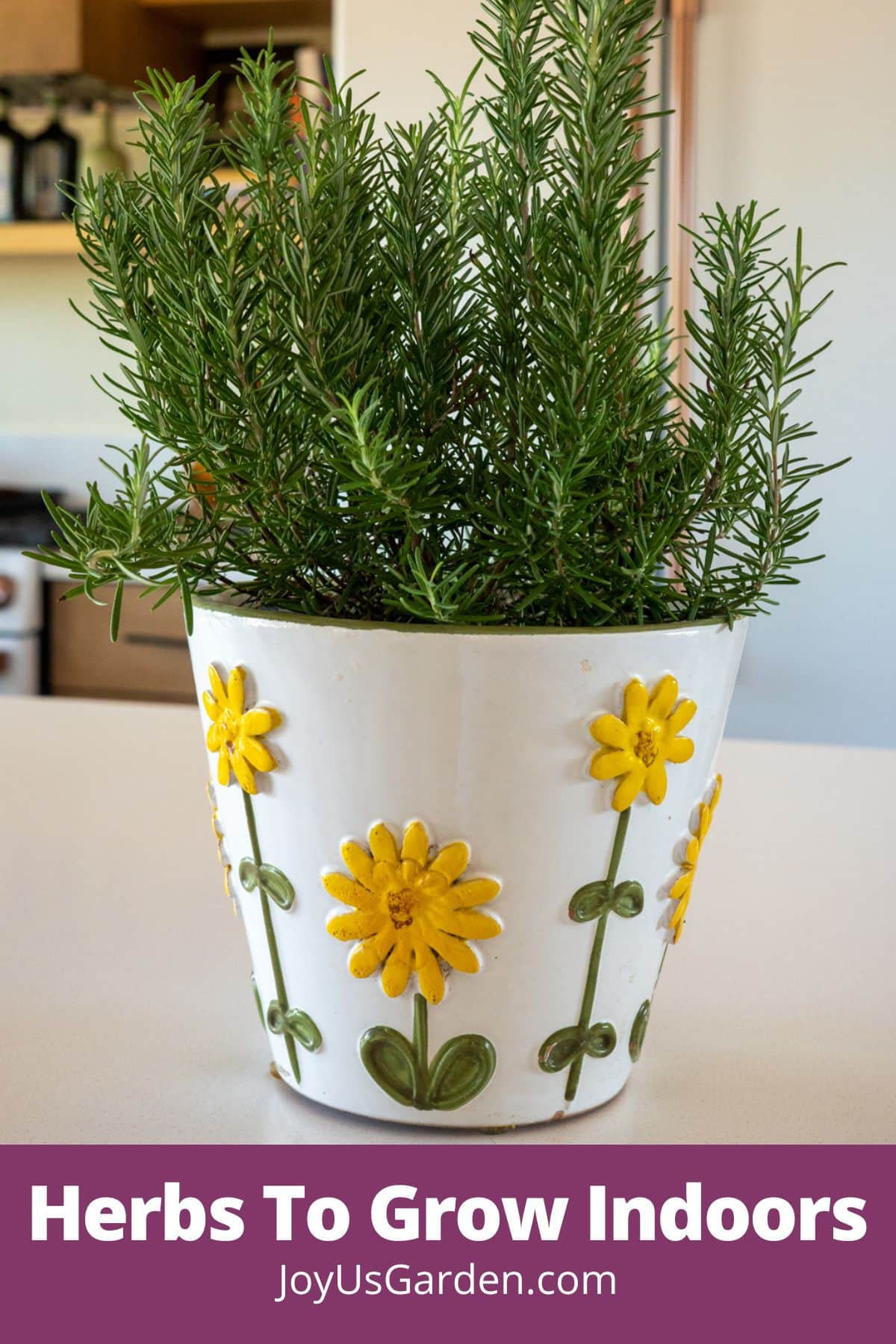
Sunlight
When growing herb plants indoors, one of the most important things to consider is the placement of your plants. In outdoor gardens, most herbs grow best in full sun, although some herbs, like cilantro and basil, can grow in partial shade. Indoors, however, you’ll need to provide your herbs with plenty of light to keep them growing strong.
Locating your windowsill herb garden near a south-facing window will generally provide your plants with enough light. But if you don’t have a sunny spot in your home, you may want to keep your plants near an LED grow light or another appropriate light source.
Giving your plants at least 6 to 8 hours of sunlight daily is the easiest way to support their growth and encourage herbs to produce more tasty leaves!
Watering
Indoor herbs don’t need as much water as herbs grown outdoors, but most herbs will still grow best with regular watering. Tender-stemmed herbs, like basil and parsley, need moist soil and should be provided with about 1” of water per week.
On the other hand, woody-stemmed herbs prefer drier conditions and should dry out slightly between waterings.
One thing to keep in mind is that herbs can develop root rot if they sit in excess water. To avoid this, don’t overwater your plants, and always grow herbs in containers with plenty of drainage holes.
10 Herbs to Grow Indoors
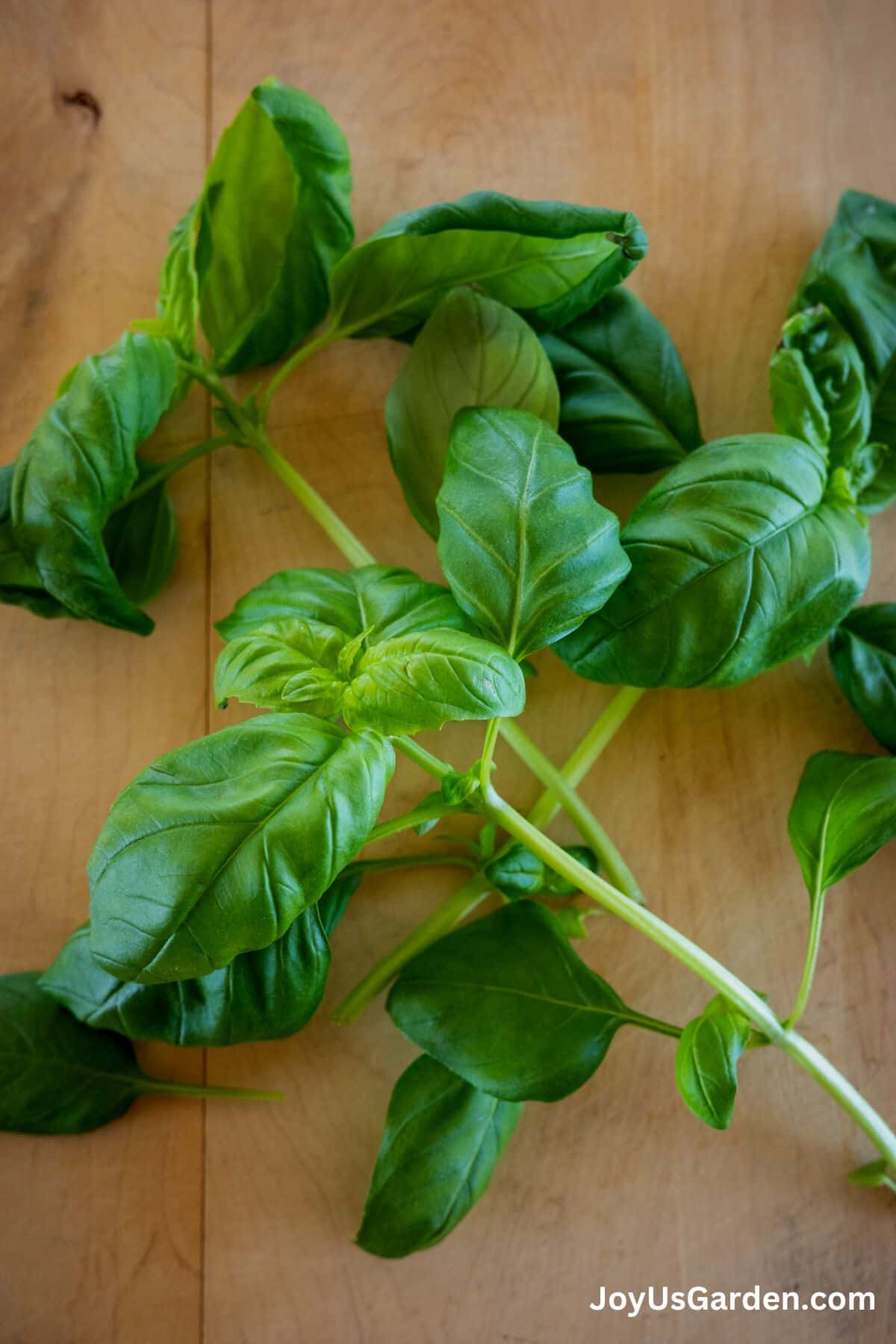
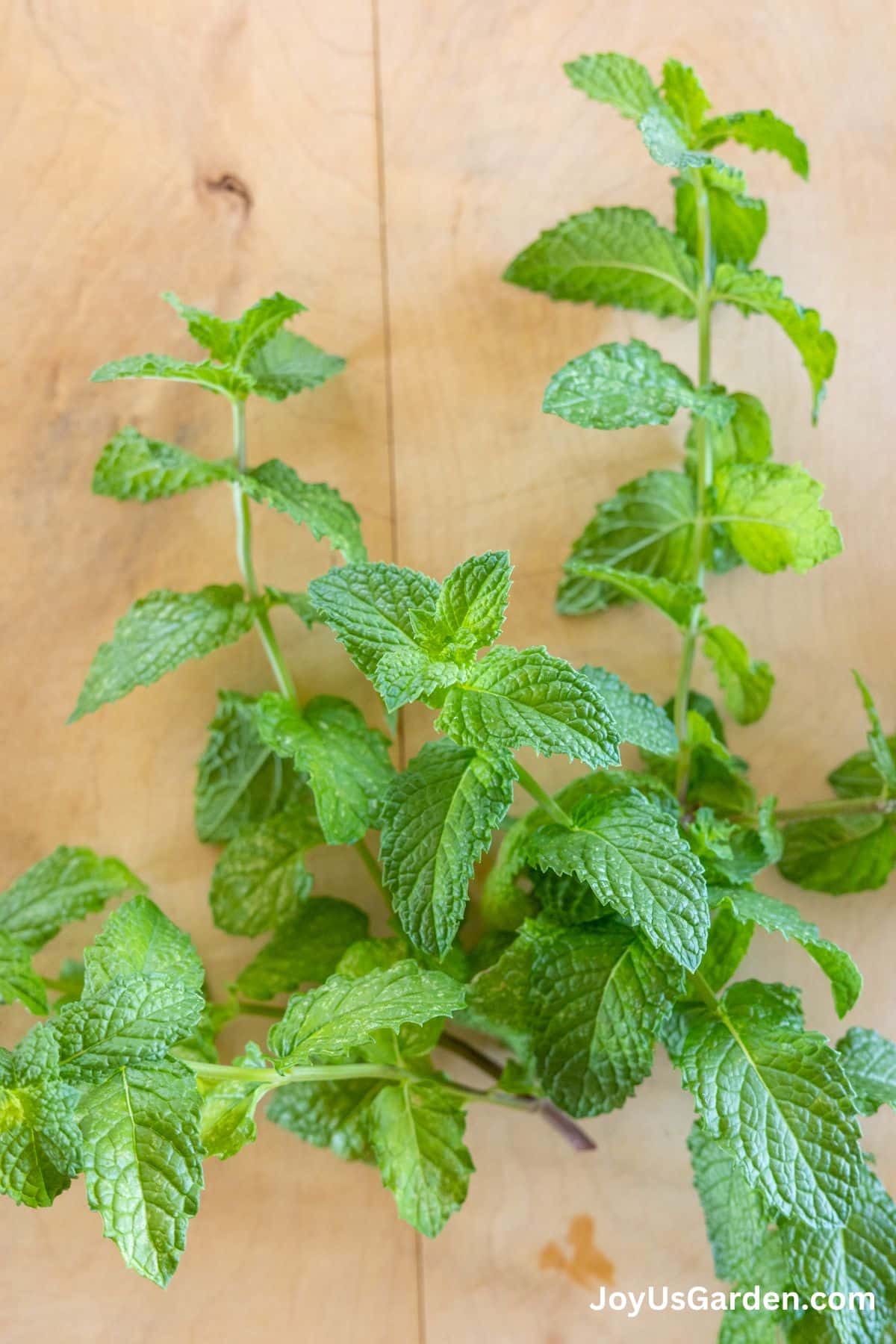
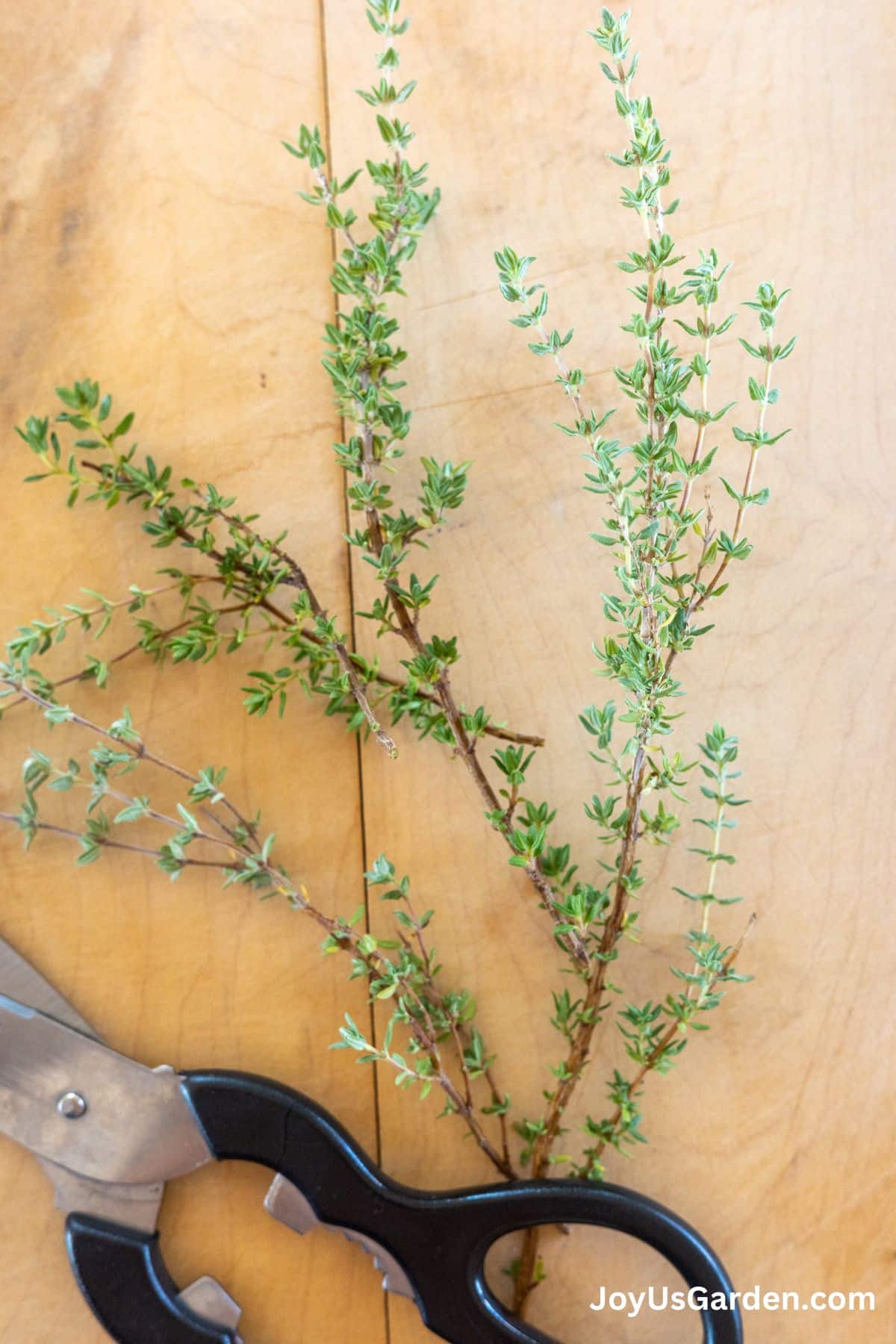
Most herbs can be grown in an indoor garden, but if you’re working with a small apartment or limited growing area, you’ll probably want to stick with small plants.
Herbs like sage can get quite large, but the plants in the list below are easy to keep indoors and won’t overwhelm a small growing space.
Bay Laurel
Bay laurel or sweet bay (Laurus nobilis) is the plant that produces bay leaves, and it’s a fantastic choice for indoor setups. Not only does bay laurel grow perfectly in pots, but it’s also a heat-loving plant that won’t survive a cold winter outside.
Keeping bay laurel indoors in colder climates will allow you to enjoy this plant all year round, but be sure to locate your laurel in bright light for proper growth.
Lemon Balm
Lemon balm is actually a member of the mint family, and like other mint plants, it can grow invasively in inground gardens. But when kept in containers, lemon balm is much easier to manage and will grow happily with just a little water and sunshine.
While lemon balm isn’t commonly used for cooking, it makes a delicious herbal tea with delicate notes of lemon.
Basil
If you’re looking for easy herbs, basil plants are hard to beat. When kept in outdoor gardens, basil grows best in partial sun and can handle indirect light indoors too.
Sweet basil is the most common variety of basil to use in pesto and pasta dishes, but you can also try out other basil varieties like Thai basil and purple basil.
We have a post dedicated to Growing Basil in Pots Indoors that gives much more info on this very popular herb.
Thyme
An essential ingredient in roasted dishes, soups, and stews, thyme is a low-growing plant that won’t outgrow even small clay pots. As a Mediterranean herb, thyme needs lots of natural light but doesn’t need much water.
To avoid waterlogged roots, be sure to grow your thyme in a good potting mix that drains quickly.
Rosemary
Many gardeners keep their rosemary plants indoors over the winter months as rosemary doesn’t like cold temperatures. But if you keep rosemary warm and water it sparingly, this easy going herb will reward you with lots of fresh leaves for roasted dishes and other savory treats.
Just remember that rosemary likes a bit of humidity when growing indoors, so you may want to grow your plant on a pebble tray with water to keep the leaves from becoming crispy.
Here are some Uses For Rosemary, a very aromatic herb with striking dark green foliage.
Parsley
While you can purchase parsley plants at your local garden center, parsley is a fast growing herb that readily grows from seed. Both curly and flat-leaf variety parsley plants are easy to keep in pots and are light feeders, so you won’t need to worry about fertilizing them.
Another good thing about parsley is that frequent harvesting causes the plant to grow faster and produce new growth!
Mint
One of the fastest growing edible plants around, mint can be a nuisance in the garden, where it rapidly overgrows nearby plants. But when kept in separate pots, mint makes a fine addition to indoor herb gardens, and its refreshing leaves are delicious in herbal teas, salad dressings, and more.
While mint will grow best in a southern exposure, it can handle slightly lower light levels and responds well to pruning, making the plant grow bushier and fuller over time.
Chives
A perfect complement to salads and baked potatoes, fresh chives are commonly sold at the grocery store, but you can save a lot of money by growing your own chives at home. One benefit of growing chives indoors is that these plants naturally repel pests like thrips, and they can keep insects from preying on your other herb plants.
Like parsley, chives are a cut-and-come-again herb that bounces back quickly after harvesting, and chives also produce edible flowers that make colorful salad toppers.
Oregano
Oregano is another great addition to indoor herb gardens since it’s just so undemanding, and it rarely grows over 12” high when kept in pots. When mature, oregano will occasionally flower indoors, but you can prune those flowers away to redirect your plant’s energy toward growing more leaves.
Beyond that, oregano requires little maintenance as long as you grow it in soil with good drainage and provide it with lots of bright light.
Cilantro
A must-have for anyone who loves making salsa, cilantro is easy to grow from seed, but it can be a challenge to keep in outdoor gardens since it often bolts at the slightest signs of heat. However, if you keep cilantro indoors at cooler temperatures, you won’t need to worry about bolting as much, and you can keep your cilantro plants productive for much longer.
Cilantro is more adaptable to different light conditions than many other herbs, and it can grow in medium light, although it will be most productive in brighter windows.
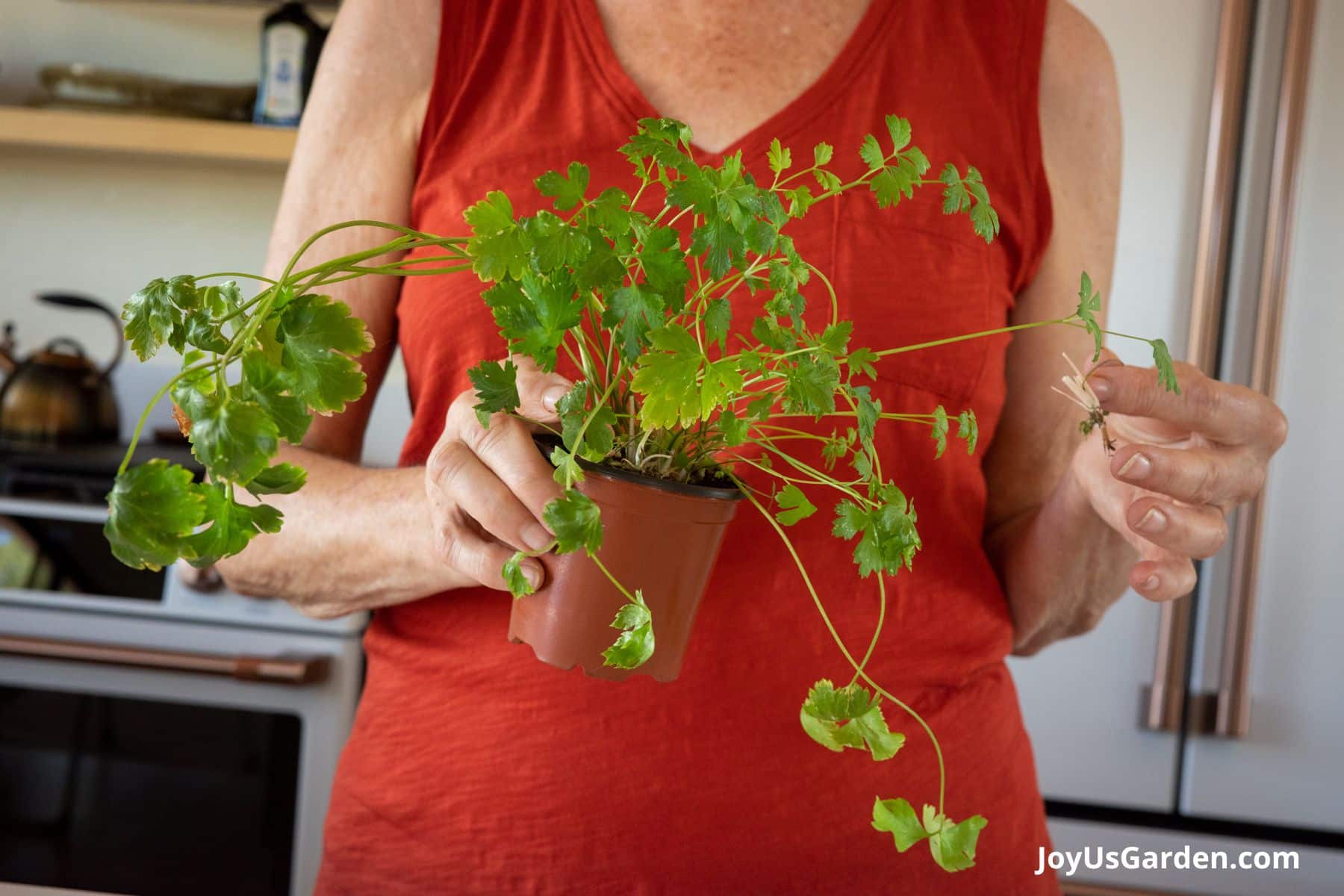
What To Look For When Buying Herbs
Many herbs can be grown from seed, but you can harvest herbs a lot earlier if you start your indoor herb garden with an established plant or two from your local nursery.
When selecting young plants for your herb garden, check them over carefully for any signs of pests or diseases. Healthy plants should have rich, green leaves and sturdy, plump stems. Avoid plants with significant signs of damage, such as yellowing or wilting, and steer clear of plants with sticky “honeydew” residue on their leaves or other signs of pest activity.
How To Grow Herbs Indoor From Seeds
If you don’t mind waiting a bit longer to harvest herbs, growing your plants from seeds is a great way to save money on your herb garden, and it’s incredibly easy to do too. The best herbs to grow from seed are generally tender-stemmed herbs, like basil, parsley, and cilantro, but you can try your hand at growing other herbs from seed as well.
Although herb seeds can be started any time of the year, most gardeners agree that early spring is the best time for starting seeds. To start herbs from seeds, evenly scatter seeds across a rich, moist potting soil or seed starting mix and then water the seeds gently.
After planting, locate your seed starting trays or pots near a light source and water your seeds regularly until they sprout. Bottom watering seed trays can be a good idea, as it prevents lightweight seeds from being washed away by your watering can. Also, don’t forget to add a fan to your setup, as good air circulation will prevent issues like damping off.
Here’s a list of Herbs For Cooking, plus how to grow, harvest, store & use them.
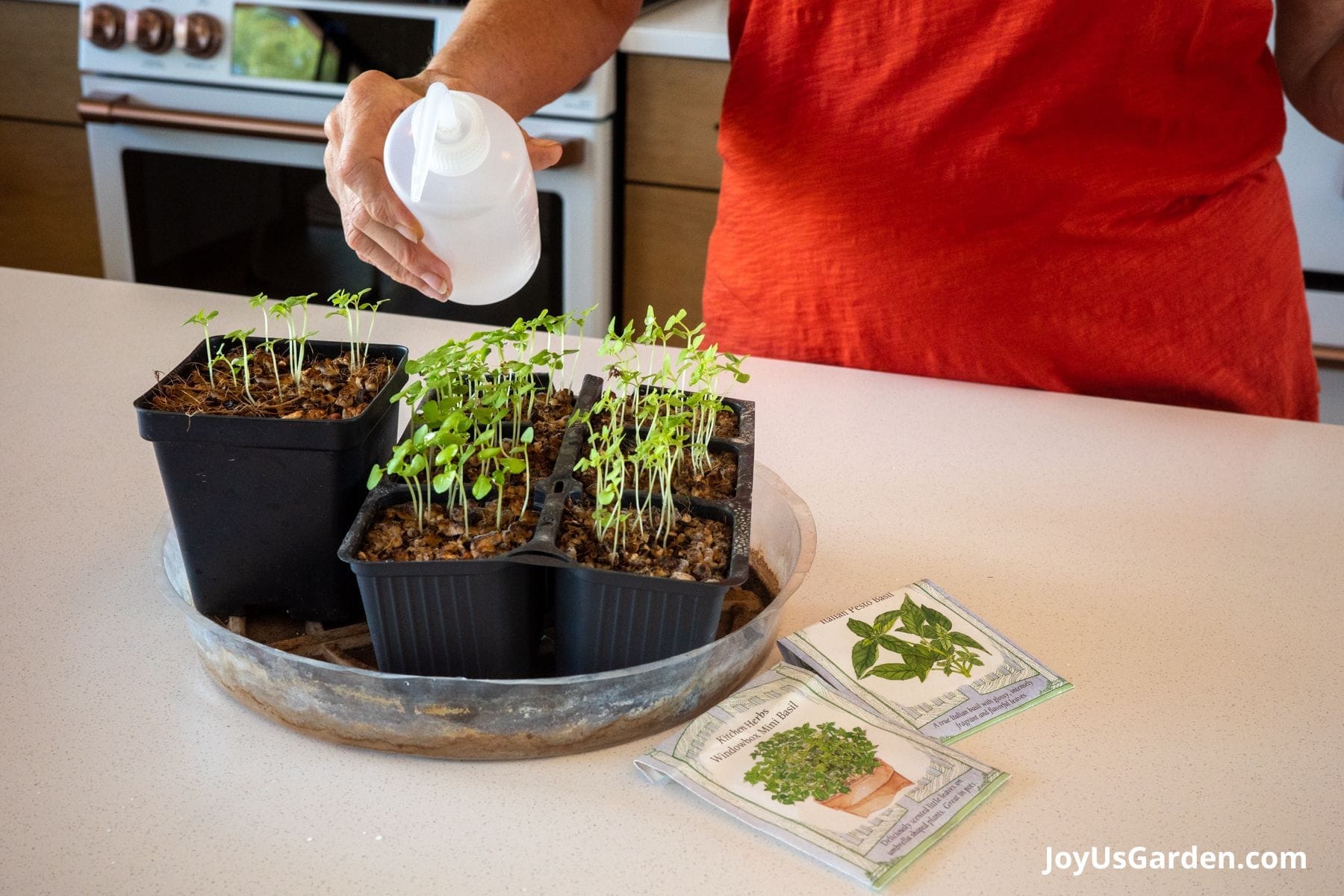
If you want to grow a small mixed herb garden with its own grow light and seed pods, check out this hydroponic AeroGarden Herb Kit. Six fresh herbs could soon be at your fingertips!
Potting Your Indoor Herbs
Herbs can be grown in various containers, including clay pots, plastic planters, and fabric grow bags. Just make sure your pot is well draining and look for deep pots large enough to accommodate your plant’s roots. Some herbs need bigger pots than others, but most herbs will grow well in pots at least 6 to 8” in diameter.
When you’re ready to plant your herbs, add a few inches of potting mix to the base of your containers and then locate your herb plants in the pot so that they’re at the same depth they were growing in their nursery pots. Then backfill the planter with potting mix, firm the soil around the base of your plants, and give your new plants a good drink of water.
Avoid the temptation to use garden soil in your container garden, as it is too dense for potted plants and can impede water drainage and root development.
Common Problems Growing Herbs Indoors
Overwatering and poor lighting are the two most common problems you’re likely to encounter with indoor herbs. However, you can avoid both issues by keeping your plants in well-draining pots and providing lots of light.
Pests, like spider mites, aphids, and thrips, can also occur in indoor herb gardens. If you find pests on your herbs, isolate the affected plant and treat it with an organic soap or neem oil spray.
Growing Herbs Indoors
Just like garden plants, indoor herbs need a proper balance of light, water, and soil nutrients to grow properly. Grow your herbs in bright light and water them about once a week, although herbs like rosemary may need less water.
Because herbs are light feeders, you may not need to fertilize them at all, but most herbs will grow better with a monthly application of a diluted liquid organic fertilizer.
Beyond that, caring for herbs is easy. Simply snip off stems and leaves as needed for recipes, but never harvest more than 1/3 of your plants at a time.
Keeping herbs near a humidifier or on a pebble tray can also be a good idea since extra humidity will keep your herbs from drying out.
Below are a few of our favorite seeds to grow from seed. We always have a pot or two of basil in the kitchen!
Herbs To Grow Indoors FAQ’s
Fast growing herbs with tender stems, like basil, parsley, and cilantro, are generally the easiest to grow indoors.
Yes, as long as you provide your plants with the right conditions, you can easily grow herbs indoors all year round. Just keep in mind that some herbs are true annuals, and they’ll only live for a year, even with proper care.
You can grow most herbs in indoor herb gardens, but tender perennial herbs are a particularly good choice for overwintering indoors. Plants like rosemary and bay laurel don’t grow well in cool temperatures, but they’ll grow beautifully all winter long inside!
Basil and cilantro don’t need as much sun as some other herbs, but all plants need light to grow. If you don’t have a sunny window to keep your herbs in, place your plants near a small grow light to prevent legginess and stretching stems.
We have written other posts on herb gardening, explore more herb guides here: Planting Lavender In Pots, Lavender FAQs, Pruning Oregano, Mint: How To Care For And Plant This Fragrant Herb
Conclusion
Growing herbs indoors is the best way to have the freshest ingredients on hand for your recipes and save money on your grocery bill. If this is your first time growing herbs, select easy-care plants like basil and use the tips we’ve covered today to set up your indoor garden.
In no time, you’ll be growing herbs like a pro and reaping the rewards of your harvest with the most flavorful herbs for fresh eating and drying!
Happy Gardening,
-Lauren
This post may contain affiliate links, you can read our policies here.
